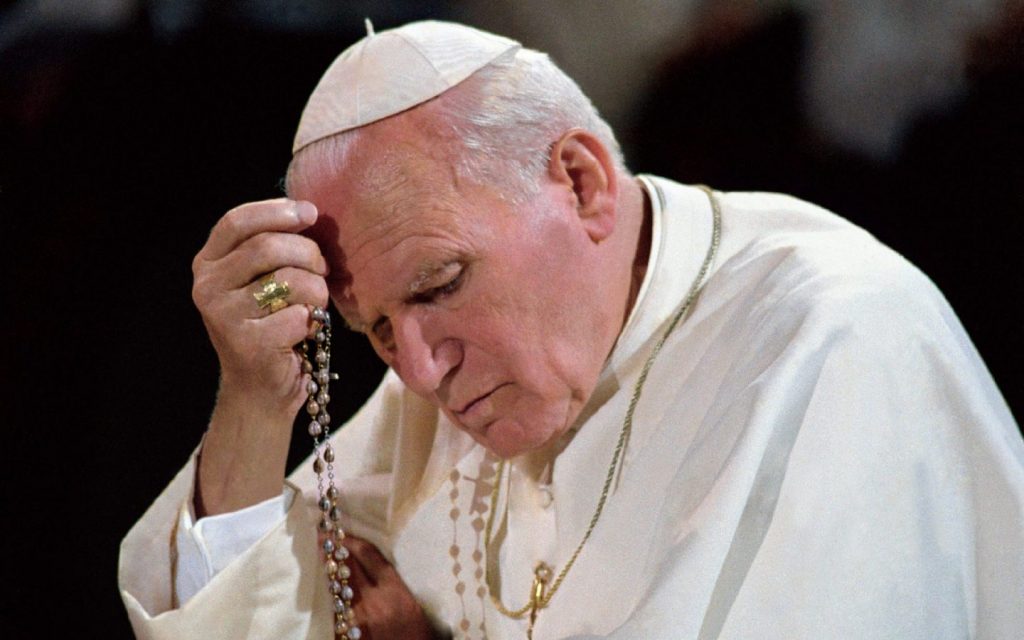Brief Overview
- Poland’s deep Catholic heritage has produced saints whose lives and actions reshaped the world.
- These five saints—Brother Albert Chmielowski, Faustina Kowalska, Maximilian Kolbe, Jerzy Popiełuszko, and John Paul II—lived out their faith with extraordinary dedication.
- Each faced unique challenges, from poverty and war to oppression, yet responded with courage and love.
- Their contributions range from spreading mercy and sheltering the vulnerable to resisting tyranny and inspiring global renewal.
- Rooted in Poland’s devotion to the Sacred Heart of Jesus and Our Lady of Częstochowa, their legacies endure.
- This article explores their lives, works, and lasting impact on the Church and society.
Detailed Response
Saint Albert Chmielowski: A Life for the Poor
Saint Albert Chmielowski began his life as a talented artist in 19th-century Poland. Born in 1845, he lost a leg fighting in an uprising against Russian rule, an experience that deepened his faith. Despite his skill with a paintbrush, he felt a stronger call to serve the poor. He abandoned his artistic career to focus on the homeless and destitute in Krakow. Chmielowski joined the Third Order of Saint Francis, adopting a life of simplicity and service. With proceeds from his paintings, he built shelters for those in need. Later, he founded the Albertine Brothers and Sisters, religious communities dedicated to the poor. His work spread across Poland, offering practical help and spiritual hope. This commitment to the marginalized reflects Catholic teaching on charity, as seen in the Catechism of the Catholic Church (CCC 2447). His influence even touched a young Karol Wojtyła, the future Saint John Paul II, showing how one life of faith can inspire another.
The Early Struggles of Brother Albert
Before his transformation, Chmielowski lived a life marked by both privilege and pain. Raised in a noble family, he had access to education and culture uncommon for his time. The loss of his leg at age 18, however, shifted his perspective on suffering. He could have retreated into bitterness or despair, but instead, he turned to God. His decision to sell his artwork for the poor was not impulsive; it grew from years of prayer and reflection. Joining the Franciscans gave him a framework to live out this calling. The shelters he established were more than buildings—they were signs of dignity for the forgotten. His approach mirrored Christ’s care for the least, a principle central to Catholic social teaching. By founding the Albertines, he ensured his mission would outlive him. Today, his legacy reminds Catholics to see Christ in the poor.
Saint Faustina Kowalska: Messenger of Mercy
Saint Faustina Kowalska, born Helena in 1905, came from a poor farming family in Poland. Her early life was humble, with little formal education and years spent as a housekeeper. Rejected by several convents due to her poverty, she persevered until joining the Sisters of Our Lady of Mercy in 1925. There, she received private revelations from Jesus, beginning in the 1930s. These experiences, recorded in her 600-page Diary, centered on God’s mercy. She described Jesus asking for a devotion to His Divine Mercy, including a specific prayer and image. Despite skepticism from some, her writings gained Church approval after her death in 1938. Her message spread globally, leading to Divine Mercy Sunday, celebrated the Sunday after Easter. The Catechism (CCC 1846-1848) ties mercy to salvation, a theme Faustina’s life amplified. Her simple faith changed how millions understand God’s love.
Faustina’s Lasting Impact
Faustina’s revelations were not immediately embraced; she faced doubt even within her convent. Her persistence in documenting them, despite poor health, showed remarkable trust in God. She died at 33 from tuberculosis, yet her Diary outlived her, translated into many languages. The Divine Mercy devotion it inspired offers Catholics a way to seek forgiveness and peace. Popes, including John Paul II, championed her cause, canonizing her in 2000. Her image of Jesus with red and white rays is now recognized worldwide. This devotion aligns with John 3:16, emphasizing God’s mercy for all. Faustina’s life proves that even the humblest can carry a message that transforms the Church. Her influence continues in countless chaplets prayed daily. She remains a quiet but powerful force in modern Catholicism.
Saint Maximilian Kolbe: Martyr of Charity
Born in 1894, Maximilian Kolbe grew up in a devout Polish family. A childhood vision of Mary offering him two crowns—one white for purity, one red for martyrdom—shaped his life. He became a Franciscan priest, dedicating himself to Mary Immaculate. Kolbe founded the Militia Immaculatae, a movement to spread devotion to Mary through publications. His monastery in Niepokalanów grew into a major printing center, producing Catholic materials. During World War II, he sheltered 2,000 Jews from Nazi persecution there. Arrested in 1941, he was sent to Auschwitz, where he volunteered to die in place of another prisoner. His death by lethal injection after weeks of starvation showed selfless love. The Catechism (CCC 2269) condemns unjust killing, making Kolbe’s sacrifice a counter-witness to Nazi evil. His martyrdom inspires Catholics to live for others.
Kolbe’s Broader Influence
Kolbe’s work extended beyond his death in 1941. His publications reached thousands, strengthening faith under oppression. The Militia Immaculatae still exists, promoting Marian devotion globally. At Auschwitz, his choice to die for a father of a family stunned even the guards. This act of charity reflects John 15:13, laying down one’s life for a friend. Canonized in 1982, Kolbe became a symbol of resistance to tyranny. His life bridged faith and action, showing how devotion can confront evil. The man he saved, Franciszek Gajowniczek, lived to 95, a testament to Kolbe’s gift. His story challenges Catholics to consider the cost of love. Kolbe’s legacy endures in a world still needing such examples.
Blessed Jerzy Popiełuszko: Voice of Freedom
Jerzy Popiełuszko, born in 1947, was a priest during Poland’s communist era. Ordained in 1972, he served quietly until the 1980s, when he began opposing the regime. His “Masses for Freedom” drew thousands, blending faith with calls for justice. These open-air sermons offered hope amid censorship and fear. Popiełuszko’s peaceful resistance aligned with Catholic teaching on human dignity (CCC 1929-1933). The communist government saw him as a threat, and in 1984, security police murdered him. His death at 37 sparked outrage, galvanizing Poland’s push for freedom. Beatified in 2010, he remains a symbol of faith under persecution. His Masses inspired Solidarity, the movement that helped end communism. Popiełuszko showed how truth can prevail over oppression.
Popiełuszko’s Role in Poland’s Liberation
Popiełuszko’s courage was not loud or aggressive; it was steady and rooted in prayer. His sermons often cited Matthew 5:10, blessed are those persecuted for righteousness. Crowds grew because he spoke to their struggles without compromise. The government’s attempt to silence him backfired, making him a martyr. His funeral drew over 250,000 people, a sign of his impact. Poland’s freedom in 1989 owes much to his moral clarity. The Church recognized his witness, advancing his cause for sainthood. His life teaches Catholics to stand firm in faith, even at great cost. Popiełuszko’s influence rippled beyond Poland, encouraging resistance to injustice. He remains a quiet hero of the 20th century.
Saint John Paul II: A Global Witness
Karol Wojtyła, born in 1920, became Pope John Paul II in 1978. Raised in Poland under Nazi and communist rule, he knew suffering firsthand. As pope, he traveled the world, preaching love and human dignity. His 1979 visit to Poland sparked the Solidarity movement, weakening communism. He survived an assassination attempt in 1981, forgiving his attacker publicly. John Paul II canonized more saints than any predecessor, including Faustina and Kolbe. His writings, like the Catechism (CCC 1-3), emphasize God’s call to all. He died in 2005 and was canonized in 2014. His papacy reshaped the Church’s global presence. Known as “the Great,” he left a legacy of faith and freedom.
John Paul II’s Enduring Legacy
John Paul II’s early life as a worker and priest prepared him for leadership. Losing his family young deepened his reliance on God. His election as the first non-Italian pope in centuries signaled change. His Polish roots tied him to the saints discussed here, especially Brother Albert. His encyclicals addressed modern issues with clarity and depth. The fall of the Soviet bloc owes much to his moral support for freedom. He engaged youth through World Youth Day, revitalizing the Church. His forgiveness of his would-be killer reflected Luke 6:27, love your enemies. Canonizing Faustina, he spread Divine Mercy worldwide. John Paul II’s life shows how one Catholic can change history.
Poland’s Saints in Context
These five figures emerged from Poland’s unique Catholic culture. Devotion to the Sacred Heart and Our Lady of Częstochowa shaped their faith. Each faced trials—war, poverty, oppression—yet responded with holiness. Their actions align with the Church’s mission to serve and sanctify (CCC 828). Together, they influenced millions, from Krakow’s streets to global pulpits. Their lives intersected, as seen in John Paul II’s ties to Chmielowski and Faustina. Poland’s history of suffering purified their witness. Their canonizations affirm their universal impact. They show how faith can transform both individuals and nations. Their stories remain relevant in a world seeking hope.
Conclusion: A Call to Holiness
These saints offer distinct yet united lessons in Catholic living. Chmielowski chose the poor over personal gain. Faustina shared mercy with a skeptical world. Kolbe gave his life for another. Popiełuszko spoke truth amid lies, and John Paul II led with love. Their Polish roots tie them to a shared heritage of faith. Each answered God’s call in their time, changing the world as a result. The Catechism (CCC 2013) urges all to holiness, a path they walked. Their examples challenge Catholics to act with courage and charity. Their lives prove that sanctity can reshape history.
Signup for our Exclusive Newsletter
-

- Join us on Patreon for premium content
- Checkout these Catholic audiobooks
- Get FREE Rosary Book
- Follow us on Flipboard
Discover hidden wisdom in Catholic books; invaluable guides enriching faith and satisfying curiosity. Explore now! #CommissionsEarned
- The Early Church Was the Catholic Church
- The Case for Catholicism - Answers to Classic and Contemporary Protestant Objections
- Meeting the Protestant Challenge: How to Answer 50 Biblical Objections to Catholic Beliefs
As an Amazon Associate, I earn from qualifying purchases. Thank you.

